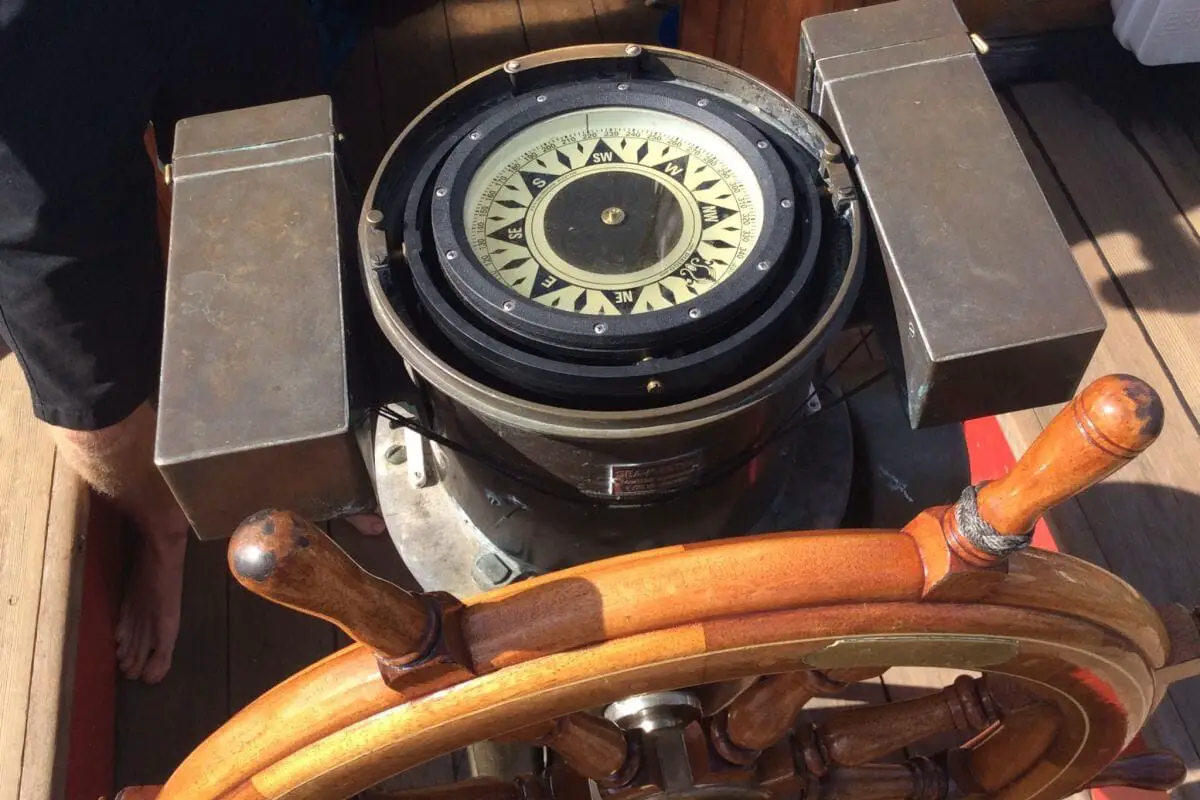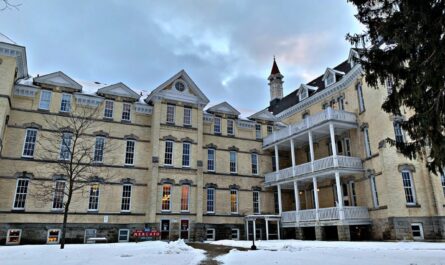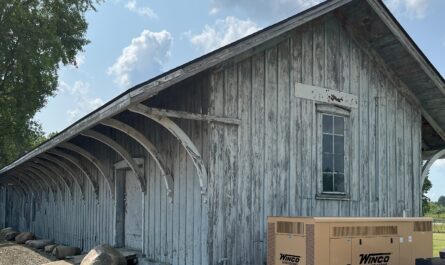The times of greatest Great Lakes shipbuilding in the Great Lakes region was during the lumbering era. From 1839 until the early 1890s, the virgin old-growth Michigan forests were cut down to produce lumber for growing towns and cities in the lower Great Lakes. Michigan was the nation’s leading lumber producer from 1869 until about 1900. The only way to transport finished milled lumber from the shoreside mills in the Great Lakes was by ship.
Table of Contents
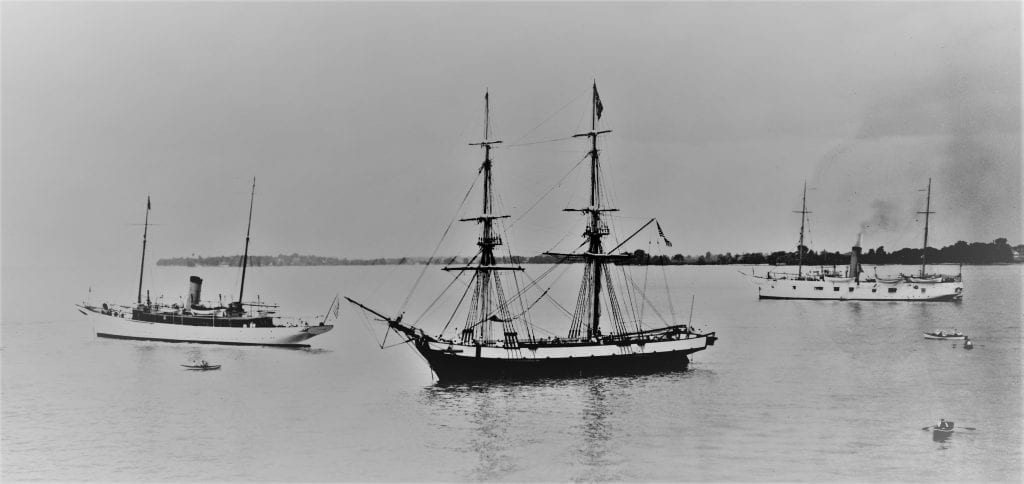
Shipbuilding in Saginaw Bay
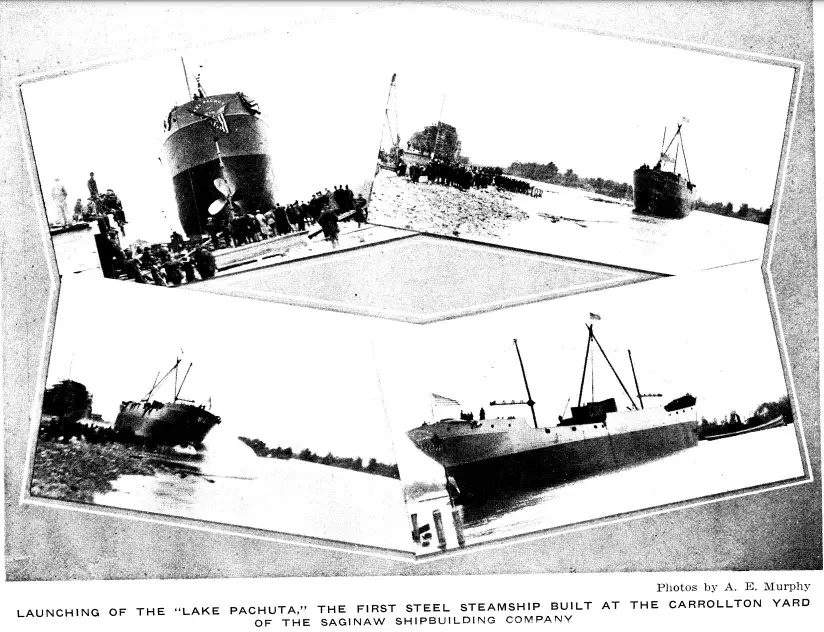
The lumber industry in the 1800s spawned an era of Great Lakes shipbuilding. Ships were built to haul milled lumber and passengers. Saginaw Bay was a major center for shipbuilding during this time, as it was home to several lumber mills that produced finished milled lumber for shipping.
Some of the most notable shipbuilding companies in Saginaw Bay included:
West Bay City Shipbuilding Company
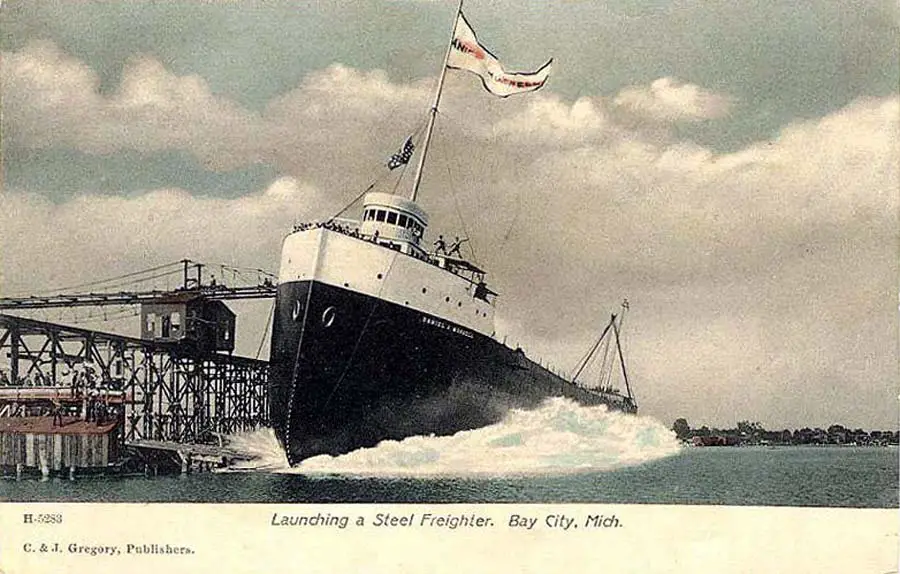
In 1876, Frank W. Wheeler, a ship captain, builder, and politician, established this West Bay City Shipbuilding Company. Originally named Wheeler & Crane, it was later renamed F.W. Wheeler Company in 1880 and Frank W. Wheeler & Company in 1889. The company was located on the Saginaw River, near Third Street. In 1899, the American Ship Building Company acquired the yard from Captain Frank W. Wheeler and renamed it West Bay City Shipbuilding Company. The yard closed its operations in 1908 after the completion of its last project, the W.R. Woodford steamer.
Defoe Shipbuilding Company
Although established in 1905, the Defoe Shipbuilding Company’s extensive operational history makes it worth mentioning. The company was situated in Bay City and constructed a multitude of commercial and naval vessels. Harry J. Defoe established the Defoe Boat and Motor Works in Bay City, Michigan, on the Saginaw River in 1905. During this period, the enterprise manufactured “knock-down” boats and gasoline-powered boats, catering to both business and leisure needs. The company’s first Navy contract, for five Spent Torpedo Chasers, was secured in 1917, followed by an order for eight steel Tumor Mine Planters in 1918. Unfortunately, the company ceased operations in 1976 after failing to renew its contracts with the United States Navy.
Saginaw Shipbuilding Company
The Saginaw Shipbuilding Company began operations in January 1918, working on government contracts for the construction of canal-size ocean freight ships in the United States Army Supply Service. At its peak production, the company employed over five hundred mechanics and laborers, a force which was increased to 1800 at full production.
These companies built hundreds of ships during their time in operation. These ships played a vital role in the development of the Great Lakes region, transporting lumber, passengers, and other goods. The shipbuilding industry in Saginaw Bay declined in the early 1900s as the demand for wooden ships declined. Other factors, such as the rise of steel shipbuilding, made wooden ships less competitive. However, the shipbuilding industry in Saginaw Bay left a lasting legacy. The ships built in Saginaw Bay played a vital role in the development of the Great Lakes region, and the shipyards that operated in Saginaw Bay helped shape the region’s economy and culture.
Research Sources for Historians
I recently ran across an online resource for Great Lakes Shipping enthusiasts. The Fr. Edward J. Dowling, S.J. Marine Historical Collection offers an ever-expanding data set of ships, Great Lakes shipbuilding, and ship names that span back to the 1830s. It’s a fascinating resource for Great Lakes shipbuilding.
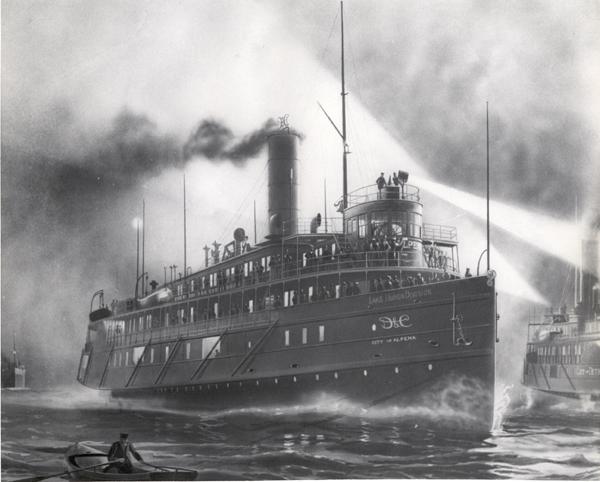
“The collection also contains 52 notebooks filled with more than 70 years of compiled data on virtually every steamship (about 10,000) of more than 100 tons that has navigated the Great Lakes. The data includes the years of which the ships were built, their owners, the ships’ dimensions, the equipment used on them, final disposition, and other data. Besides, the collection details almost every fleet navigating the Great Lakes.”
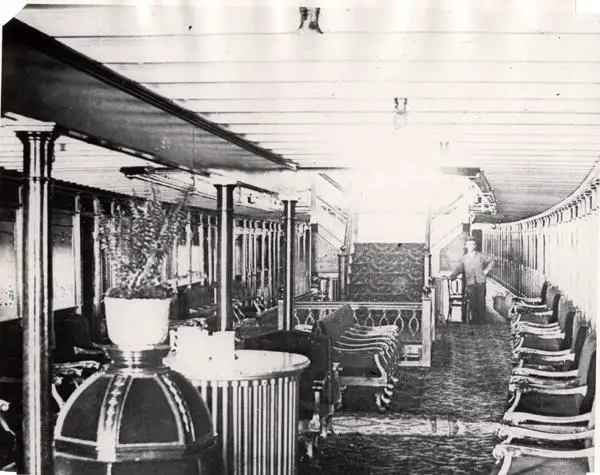
I became very interested in the Great Lakes shipbuilding in the Thumb when I found that Caseville’s Frances Crawford built a schooner, the Frank Crawford, on the Pigeon River in 1861. Our review of shipbuilding in Caseville is in a section below.
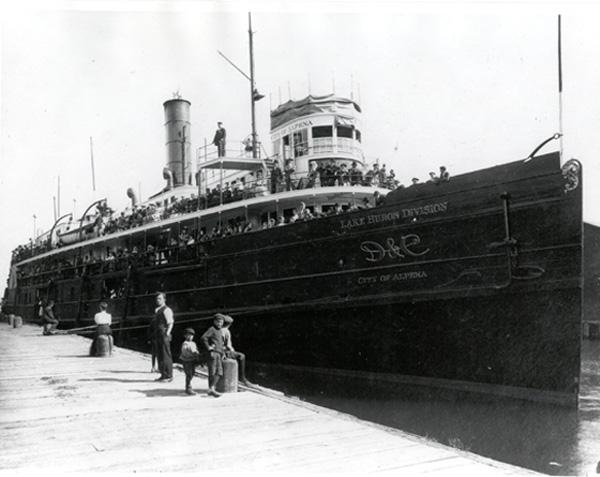
Fr. Edward J. Dowling was a noted Great Lakes historian, an associate professor of engineering graphics at the University of Detroit, and a special lecturer in marine travel and commercial shipping on the Great Lakes. He authored Lakers of World, published by the University of Detroit Press in 1967, and numerous journal articles on Great Lakes shipbuilding and shipping.
Ships and Rigs Built At Caseville Michigan
Caseville was considered a substantial lumbering town in the late 1800s with lumber yards, industrial-sized evaporators called salt blocks to process brine pumped from deep wells, and even ironworks. Shipbuilding in the Great Lakes was also an important industry. In 1861 Francais Crawford built a lake schooner. The “Frank Crawford was a large masted schooner that plied the waters all over the Great Lakes in the late 1800s.
An entry from July 29, 1861 from the Buffalo Daily Courier noted:
A NEW VESSEL. The new vessel built at Pigeon River, Saginaw Bay, which we mentioned a few weeks since in our columns, passed up yesterday to load at the above point with lumber for Cleveland parties. She has an elegant fit-out, fore and aft rig, neatly painted and called the FRANK CRAWFORD. She is sailed by Captain Edward Gaffet, of Cleveland. — Detroit Tribune.
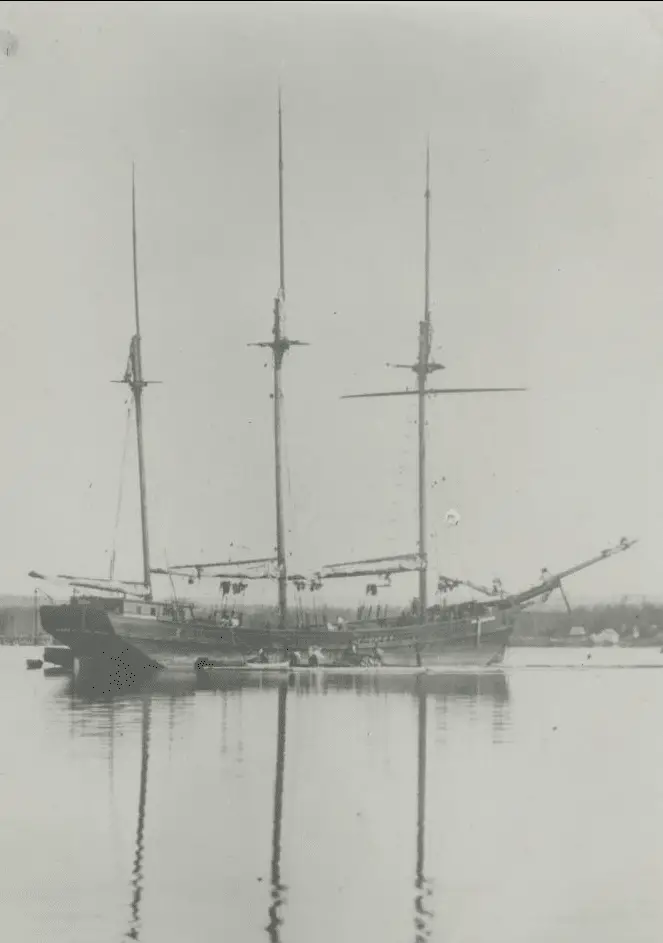
However, it seems that the vessel was noted with problems. Running aground, suffering a collision, losing a boom-jib and being sold. Her story finally culminated in 1882 on Lake Superior with this entry.
“The schooner FRANK CRAWFORD, of Chicago, ashore at Portage Bay, has been abandoned to the underwriters. She measured 213 tons, was built at Pigeon River, by R. Calkins, in 1861, rated A 2, and was valued at $9,000. William Shaw & Brother, of Chicago, were the owners. – J.W. Hall Great Lakes Marine Scrapbook, No. 2, November 1882.”
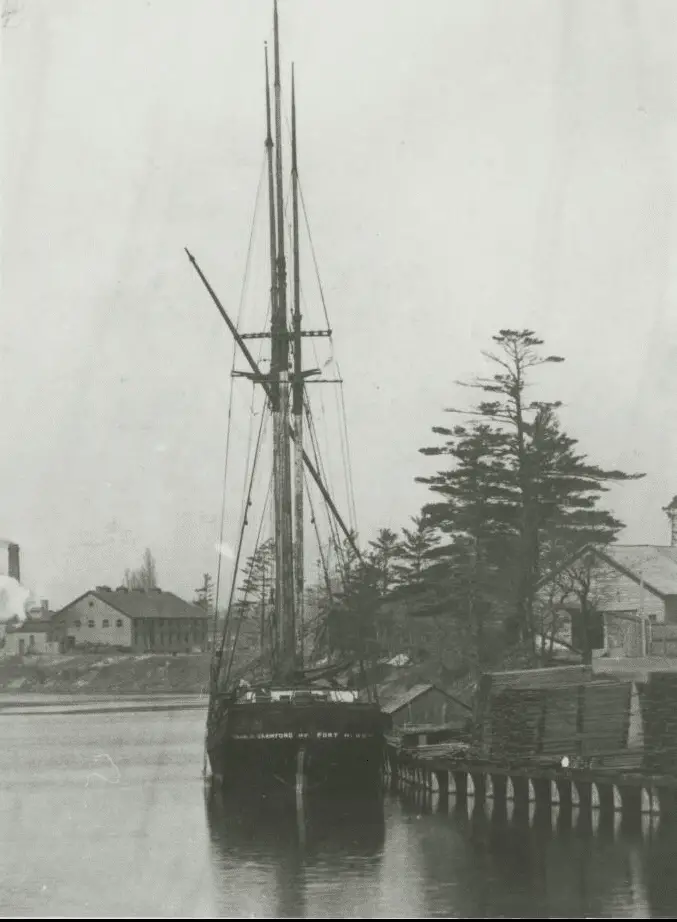
Caseville ship builders took advantage of the oak trees that dominated the area. They were pronounced to be among the best for ship building. Other industrial shipping was produced including the “Perseverance” a large lumber barge holding up to 5000 linear feet of finished lumber. The barge was towed by tug but eventually wreaked in a storm near Port Huron.
Scow Charlie Crawford
Later in 1872, the “Charlie Crawford,” a three-masted shallow draft scow freighter, used to carry raw iron ore from the Upper Peninsula to Caseville’s Iron Works. The ironworks was run about a year, and then due to the Long Depression (1873-1879), depressed iron prices, and high fuel prices, the operation ceased. The furnace stood vacant and idle for years. The red brick kiln was torn down, and each brick was cleaned for reuse. Today some of these bricks can be seen in several buildings in Caseville. The Blue Water Inn is one of the most notable businesses where the original chimney bricks were used.
The Charlie Crawford also seemed to suffer its share of events. The Indianapolis News reported in November of 1879 that:
“The schooner ashore at Port aux Barques is supposed to be the Charlie Crawford, with her mizzen gone. She left Caseville on Saturday night.”
The Port Huron Daily Times reported in October 1893:
“The schooner CHARLIE CRAWFORD, ashore on the north side of Bois Blanc Island, will be salvaged.”
There are no other mentions of the large schooner after 1893. Great Lakes Shipbuilding in Caseville looks to have ceased as the lumber era faded into memory.
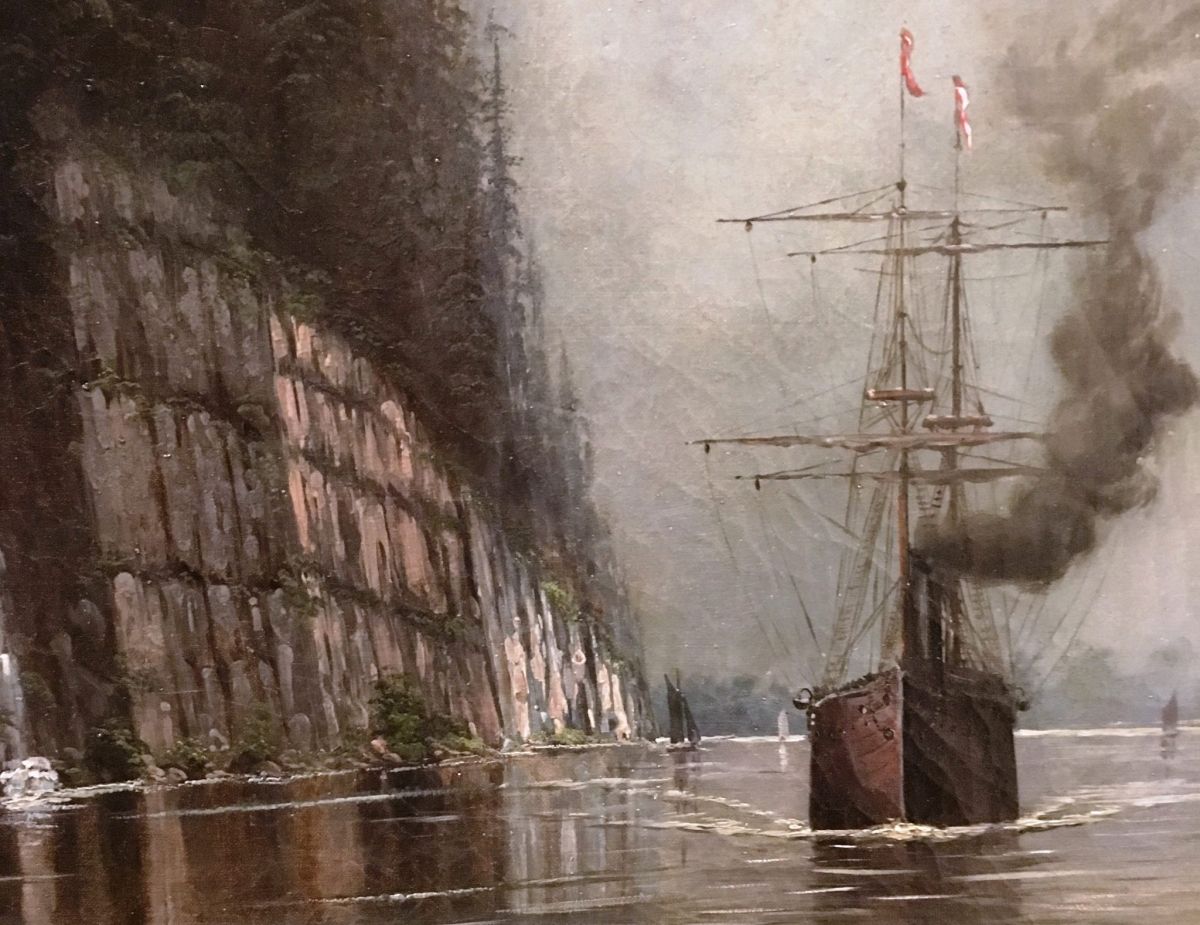
Related Shipbuilding Links
- Sebewaing’s Busy Harbor
- A Vanished Company Town in the Thumb
- Maritime History of the Great Lakes
- Steamship Excursion From Detroit 1910
- 1913 Great Lakes Storm: The White Hurricane
- The Railroad at the Bottom of Saginaw Bay
- Great Lakes Cruising History – Luxurious Times
Sources for Great Lakes Shipbuilding
- Featured image “Schooner” Wikipedia Commons
- Images of the Charlie Crawford from the Dowling Collection
- Oil painting “Off the Coast (Lake Superior)” 1886 Alexis Jean Fourier Minneapolis Institute of Art. Personal photo
- Ships depicted are the City of Alpena from the Dowling Collection.

